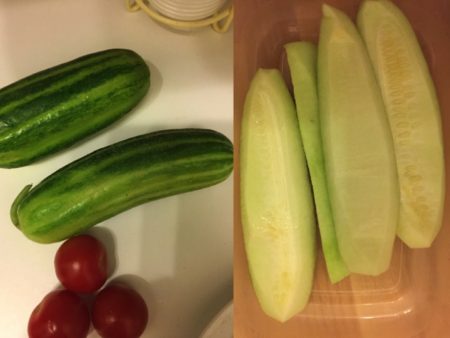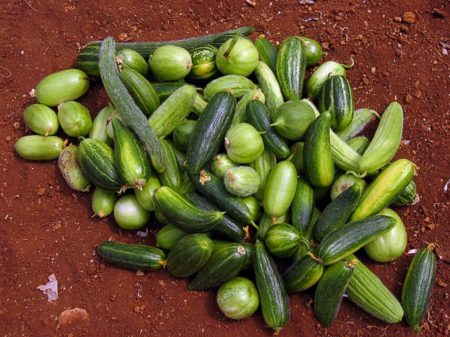- 94% is the new 75%. Here’s some of the survivors.
- But how many crafts have we lost?
- Win a prize for communicating about sweet potatoes.
- Pre-breeding eggplants using their wild relatives.
- Two waves of cat domestication.
- Svalbard double.
- 350 buck’s worth of apple history.
- 10 cent’s worth of strawberry history.
- Latest newsletter from those nice forages genetic resources conservation folks.
- Bananas good and bad news.
Brainfood: African tea, Iranian olives, Persistent identifiers, Fast breeding, Lablab domestication, Pea origin, Celebs & conservation, Ancient dope, Sugarcane evolution, Chicken selection
- Multiple origins and a narrow genepool characterise the African tea germplasm: concordant patterns revealed by nuclear and plastid DNA markers. It’s a “potpourri,” but kinda missing Chinese Assam stuff.
- The eastern part of the Fertile Crescent concealed an unexpected route of olive (Olea europaea L.) differentiation. It was in Iran before domestication.
- Identifiers for the 21st century: How to design, provision, and reuse persistent identifiers to maximize utility and impact of life science data. Why DOIs succeeded, and why something like them needs to be applied to biological specimens, including genebank accessions, to combat “desultory citation practices”. But we knew that.
- Speed breeding: a powerful tool to accelerate crop research and breeding. Can double the number of generations per unit time with fully-enclosed controlled-environment growth chambers.
- Evidence for two domestication events of hyacinth bean (Lablab purpureus (L.) Sweet): a comparative analysis of population genetic data. With the 2-seeded group domesticated in Ethiopia, the 4-seeded somewhere else in Africa.
- Refinement of the collection of wild peas (Pisum L.) and search for the area of pea domestication with a deletion in the plastidic psbA-trnH spacer. Maybe not Turkey.
- The effectiveness of celebrities in conservation marketing. Use carefully, and evaluate.
- Cannabis in Eurasia: origin of human use and Bronze Age trans-continental connections. Proto-Indo-Europeans were real stoners.
- Analysis of Three Sugarcane Homo/Homeologous Regions Suggests Independent Polyploidization Events of Saccharum officinarum and Saccharum spontaneum. It’s really complicated, not least because of plant breeders.
- Genomic Comparison of Indigenous African and Northern European Chickens Reveals Putative Mechanisms of Stress Tolerance Related to Environmental Selection Pressure. African chickens able to withstand high temperatures due to a region on chromosome 27 and European chickens low temperatures due to region on chromosome 2.
Nibbles: Visionary edition
- New guy in charge Peter Wenzl gives us his vision for the CIAT genebank.
- Agriculture and Irrigation Minister of Peru gives us his vision for the Peruvian genebank.
- CIMMYT’s annual report gives us a vision of conserving maize in Guatemala.
- Farmer Somashekhara gives us his vision for finger millet farming in India. And two makes a trend…
- Retired agriculture expert Malcolm Hazelman gives us his vision for Samoan gardens.
- A Tagorean vision of radical relocalization involving perennial edimentals.
- Lots of people give us their vision for saving the wild apple.
- IFPRI gives us their vision for the future of food in a changing world. With infographic goodness.
- Natalie Mueller et al. give us their vision for reviving the forgotten crops of the Eastern Agricultural Complex.
- A vision of a planet protected in situ, in multiple ways. Yes, even pigeons. And yes, even cities, though agrobiodiversity neglected as usual.
- A vision of permanent identifiers everywhere.
- DNA gives us a vision of domestication explained. Yes, even sugarcane.
Brainfood: Wild foods, Maize in Guatemala, Wild lentils, Sorghum gaps, Ethiopian erosion, Chikanda barcoding, Brazil nut systems, Wild carrots, Ancient wild potato use, Wild wheat grains
- The role of wild fruits and vegetables in delivering a balanced and healthy diet. Not great, until they’re domesticated.
- Maize Diversity, Market Access, and Poverty Reduction in the Western Highlands of Guatemala. Forget maize.
- Evaluation of Wild Lentil Species as Genetic Resources to Improve Drought Tolerance in Cultivated Lentil. Environment explained drought response in wild lentils better than molecular classification.
- Geographical distribution, diversity and gap analysis of East African sorghum collection conserved at the ICRISAT genebank. Both Sudans.
- Explaining the Ethiopian farmers’ perceptions on potential loss of traditional crop varieties: A principal components regression analysis. Poor farmers know more, and care more, about loss of traditional landraces.
- High-throughput sequencing of African chikanda cake highlights conservation challenges in orchids. Those are very biodiverse cakes, but not in a good way.
- Revisiting the ‘cornerstone of Amazonian conservation’: a socioecological assessment of Brazil nut exploitation. It’s actually in pretty good shape, but that doesn’t mean it can’t be improved.
- Phylogenetic Prediction of Alternaria Leaf Blight Resistance in Wild and Cultivated Species of Carrots. Look for taller material in clade A.
- Starch granule evidence for the earliest potato use in North America. S. jamesii may have been used for 10,000 years in Utah.
- Genome-Wide Association Study of Grain Architecture in Wild Wheat Aegilops tauschii. Two genetic lineages, with big differences in grain width and weight.
A roundabout way of learning about caroselli
Another despatch just in from our correspondent in Puglia, last seen checking out the olive plague. This time she sends us pictures of something called “cumazzi,” which is a new one on me.

They are not cucumbers exactly. Easy to digest and sweeter than cucumbers. Really crunchy and refreshing.
It turns out they are the immature fruits of a vegetable race of the melon, Cucumis melo, probably in the “adzhur group.” They go by a long list of names, but they seem to be restricted to Puglia (the heel of Italy), where they come in all shapes and sizes.
